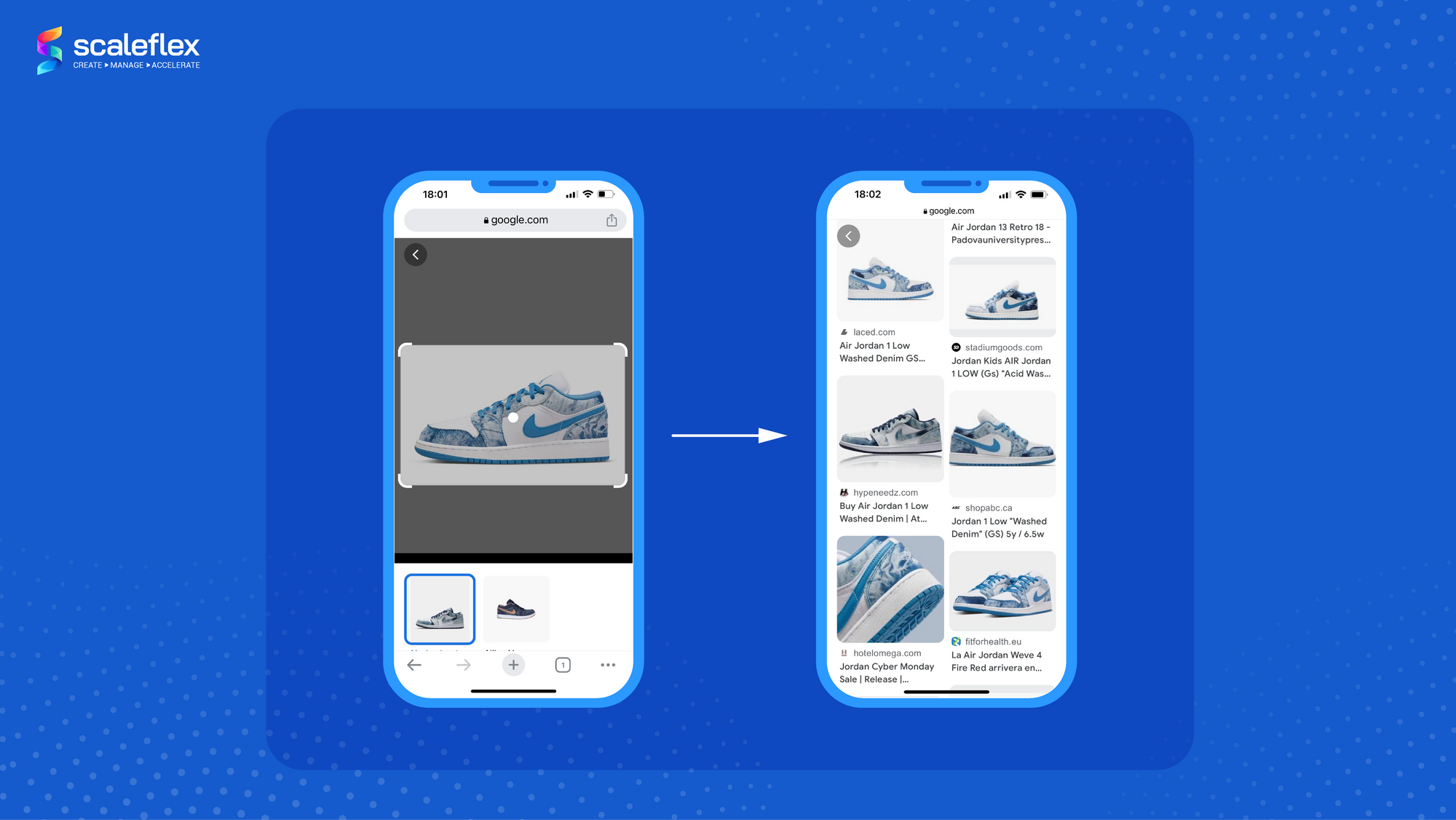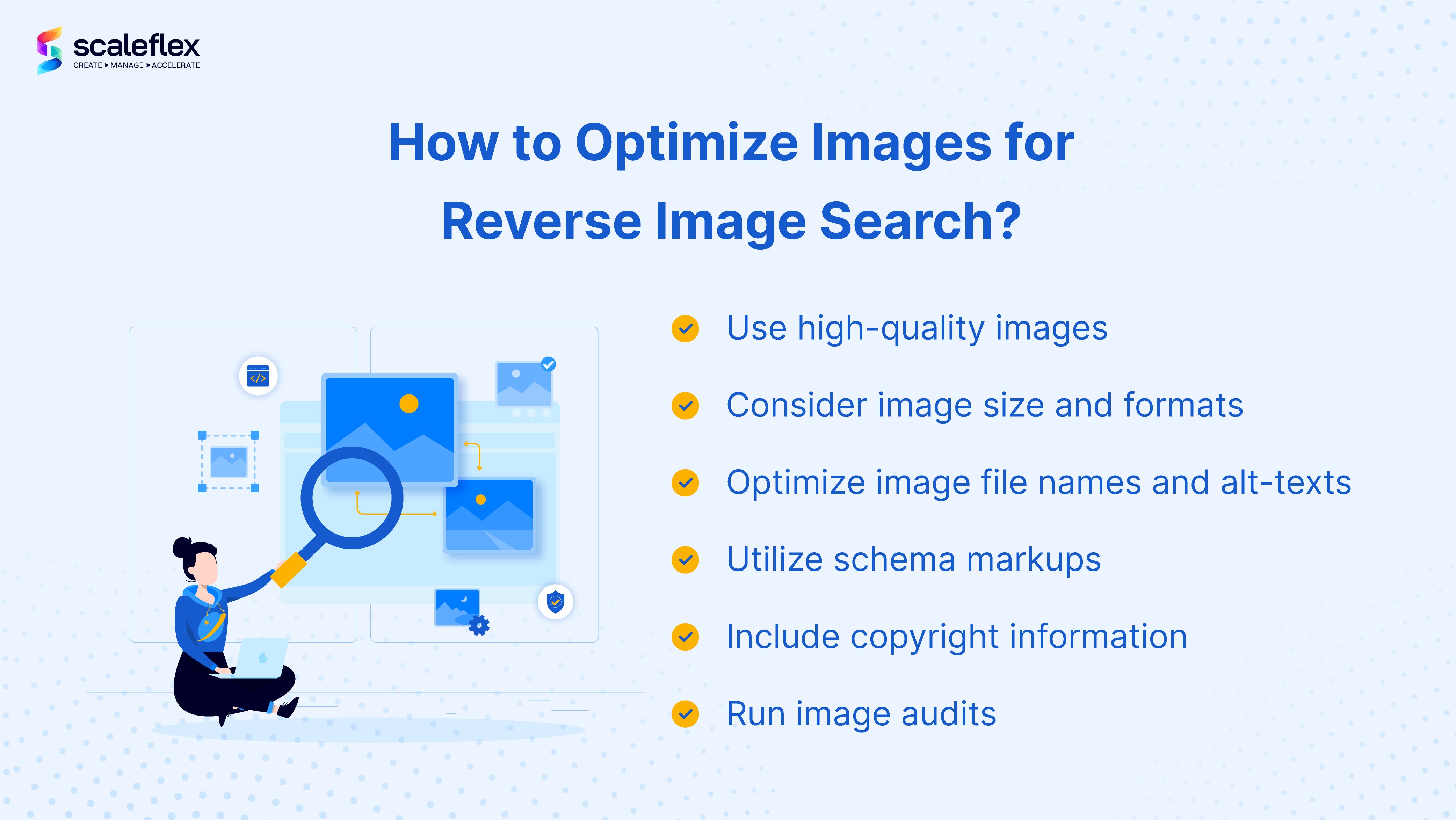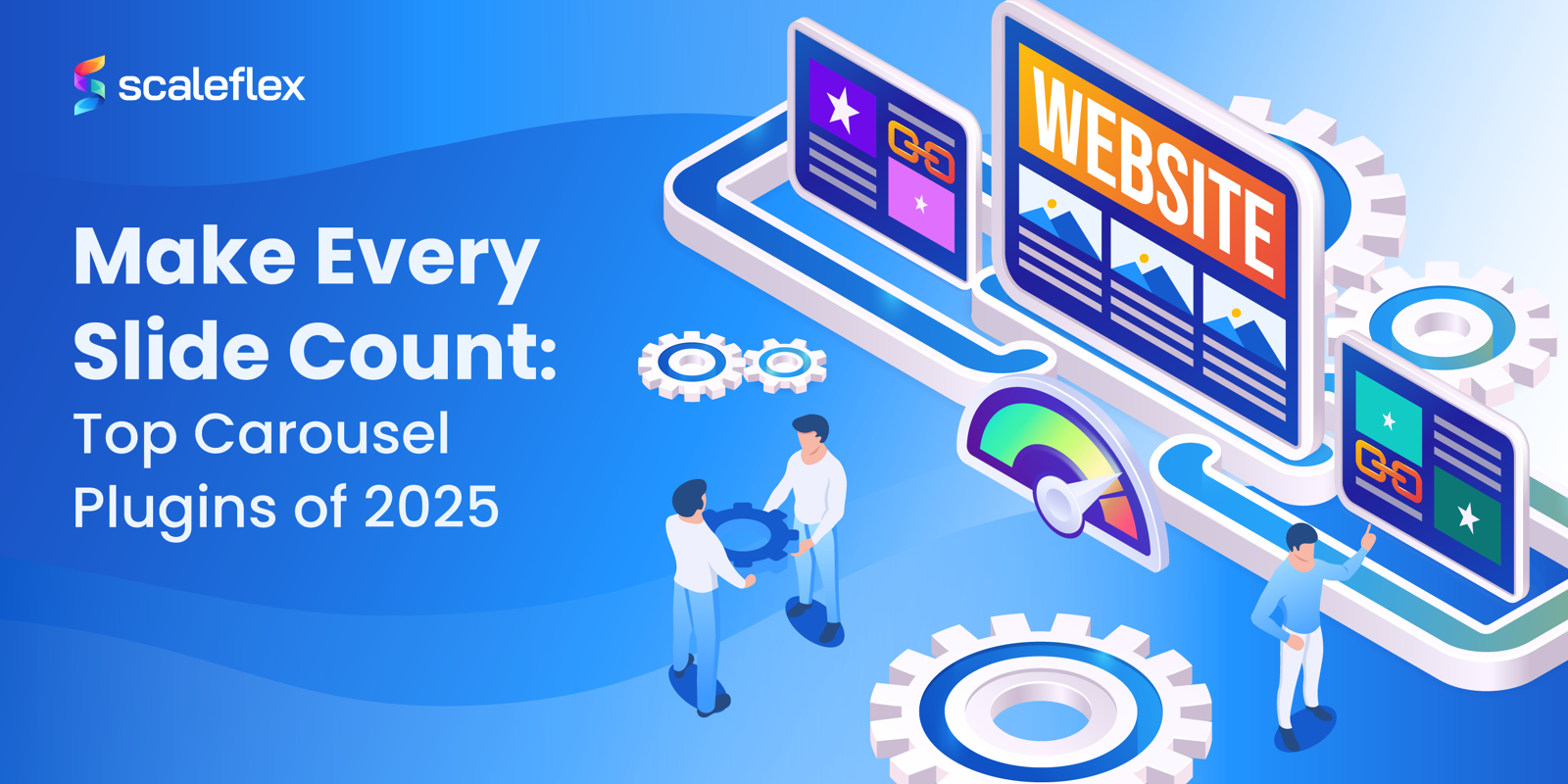The Power of Reverse Image Search Optimization for Your SEO Strategy
Have you gone window shopping and seen a particular product that has stuck with you? Or have you ever needed to name something right before you, but you couldn’t remember what it's called?
In such situations, you might go onto search engines and search for that item using all sorts of descriptive keywords and details but still not find its name. Thanks to the evolution of search engines, you can now perform visual search queries. With reverse image search, you can scour the web for images that are similar to one that you have uploaded.
This technology has a range of applications, from identifying plagiarism to finding the source of an image. In terms of SEO, it can be used to drive traffic to your website, increase brand recognition, and improve search rankings.
Really? But how? In this article, we’ll explore how reverse image search works, the benefits of optimizing your images for reverse search, and some practical tips.
What is reverse image search?
Reverse image search is a search engine technology that allows you to search for images based on an existing image. How to reverse image search? Instead of using keywords, you upload an image to the search engine, which will return results of similar or identical images and web pages that include the image.
Reverse image search works by analyzing the visual characteristics of the image, such as color, texture, and shape. This information is then compared to other images in the search engine's database to find similar matches.
It is helpful to help you:
- retrieve the source of the image
- check for the copyrights of the image
- see other instances that image is used
- find similar images
Reverse image search can be performed using a variety of search engines, including Google, Bing, and TinEye. Some search engines offer browser extensions and mobile apps for more convenient reverse image searching.
What are the benefits of Reverse Image Search Optimization?
Reverse image search has many benefits for your company and your SEO strategy; we'll go through some of them.
Drive traffic to your website
Since many people use reverse image search today, SEO strategies are becoming increasingly sophisticated. Gone were the days of focusing just on text-based SEO. Nowadays, other aspects, such as image SEO and video SEO, have also to be considered for Google image reverse search
When someone searches for an image, search engines like Google use a variety of factors to determine which images show in the results. And if you optimize your media for Google reverse image search, it can enhance your overall SEO strategy and ultimately boost your brand’s visibility and website’s traffic.

Just imagine a shopper looking for a particular shoe. Search engines not only find results of the same piece but will also come up with similar results and suggest a knowledge graph. Since there is already an obvious intention for the shopper searching for a blue shoe, they might just consider your product listing as an alternative to the original piece.
Identify opportunities for link-building
Link-building is an integral part of a marketer’s SEO strategy. Reverse image search optimization can help you identify such opportunities when you see websites using your images. What you can do is to reach out to them and ask them to credit and link back to your website. This helps increase your website’s visibility and improve your overall search engine rankings.
Protect your brand
One of the most important benefits of reverse image search optimization is the ability to protect your brand. By monitoring where your images are used online, it helps you to quickly identify instances of unauthorized use or copyright infringement. This is especially important for photographers and creatives like bloggers and influencers, or even small businesses who rely on their images for their livelihood.
If you discover that someone is using your images without permission, you can take legal action to have the images removed or seek compensation for their use. This protects your company's image licenses and intellectual property and ensures that your brand is being represented accurately and in the way you intended.
Improve user experience
Optimizing your images for reverse image search can also lead to a better user experience. 76% of consumers stated that the ability to find what they want quickly is the most critical factor on websites. By providing accurate and relevant information about your images, you can help users find exactly what they want. This can increase engagement and encourage users to stay on your website longer.
Stay ahead of your competitors
Competitor intel is gold! And reverse image search can help you with that. By monitoring how your images are used across the internet, you can identify trends and change your strategy as needed. Perhaps that same white-labeled home decor item is photographed by a competitor with exciting backgrounds? You want to know that to stay relevant and competitive in your industry.
How to optimize images for reverse image search?
Now that you understand the benefits of reverse image search optimization for your organization let's look at some practical tips for optimizing your images.

Use high-quality images
The first step in optimizing your images for reverse search is to use high-quality images. This means using images that are clear, well-lit, and in focus. High-quality images are more likely to be picked up by search engines and can help you stand out from your competitors. Additionally, using unique images can help you avoid duplication issues and improve your overall search ranking.
Consider image size and formats
The size and format of your images can impact your search visibility. Large images can slow down your website, negatively impacting your search ranking. If you are still living in the age of PNG and JPEG, think again! These days, modern image formats like WebP and AVIF are the formats you should aspire to. Selecting these formats over the conventional PNG and JPEG is because they are much lighter, load more quickly, and can handle compression better. Speed is the key when optimizing your media for SEO and delivering better user experiences. After selecting your media formats, image compression is vital to improving your Core Web Vitals. The great news is that you don't have to do it manually as today, many different image optimization solutions can automate the process on the fly. If you are using CMS for your website, numerous plugins, like WordPress image optimization, are also available.
Optimize image file names and alt-texts
Optimizing your image file names and alt texts helps search engines better understand the content of your images to improve your visibility in search results. You’ll need to use descriptive file names and alt texts that accurately reflect the content of your images.
- Use target keywords
- Avoid using symbols
- Separate words with hyphens
Utilize schema markups
Schema markup is a type of structured data that helps search engines better understand the content of your web pages. By including schema markup for your images, you can provide additional information that can improve your visibility in search results. For example, you can include information about the author, the date the image was created, and more.
Include copyright information
With ChatGPT 4.0’s ability to return image results, protecting your images from theft is necessary. If you fail to indicate copyright information on your images, your competitors can easily use them and reap the benefits of your hard work. Image attributes such as author, copyright notice, and source should be added to your images so that search engines will continue to perceive your company as the author and prefer your websites to the others who use your images.
Run image audits
To further maximize your Google reverse image search optimization efforts, monitoring the images on your website periodically is recommended. Tools like Google PageSpeed can help you with this, and we also welcome you to try out our free Cloudimage Performance report.
Latest developments
AI advancements and integration with emerging technologies like augmented reality (AR) and virtual reality (VR) are transforming the reverse image search. These changes enhance accuracy, enable new applications and make visual search a key part of digital strategies.
Advancements in AI and Machine Learning
Recent progress in AI and machine learning has significantly enhanced the accuracy and efficiency of reverse image search algorithms. These improvements enable better recognition of complex images, even under challenging conditions like varied angles and lighting. Highlighting these advancements can underscore the growing importance of reverse image search in digital strategies.
Integration with AR and VR
The convergence of reverse image search with AR and VR technologies is creating more interactive user experiences. For instance, users can now point their cameras at objects and receive instant information, blending physical and digital interactions seamlessly. Discussing this integration can illustrate the expanding applications of reverse image search.
Google's AI-driven search enhancements
Google has introduced AI-driven layouts that prioritize visual content, including images and videos, in search results. This shift underscores the growing importance of visual optimization in SEO strategies. Mentioning these updates can provide readers with actionable insights into optimizing their visual assets for better search visibility.
Enhanced visual search capabilities in E-commerce
E-commerce platforms are increasingly leveraging visual AI to improve customer experiences. Advanced reverse image search tools can now identify specific brands, styles, or features within an image, facilitating more personalized shopping experiences. Including this trend can demonstrate the practical benefits of reverse image search optimization for online retailers.
What are the key takeaways
In essence, reverse image search optimization can be a powerful tool for improving your SEO strategy. Optimizing your images and making them more discoverable can drive more traffic to your website and improve your overall search engine ranking. With these tips and practices in mind, you can take advantage of the power of reverse search optimization to maximize the potential of your website’s images. So why not try it and see how it can benefit your online presence! If you’re looking for automated media optimization solutions, try Cloudimage for free! The tool offers multiple AI features, which you can test in the Visual AI Sandbox.





